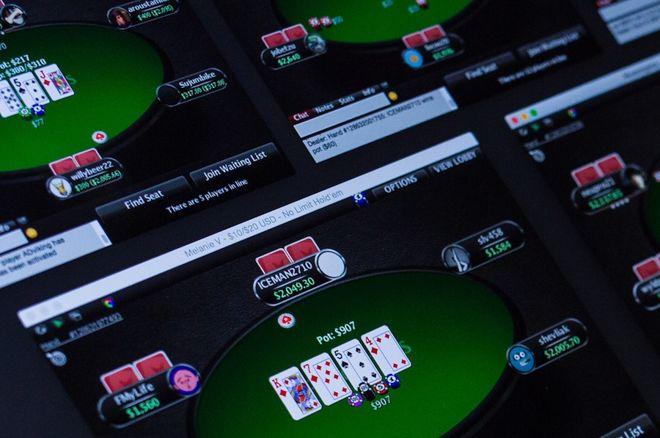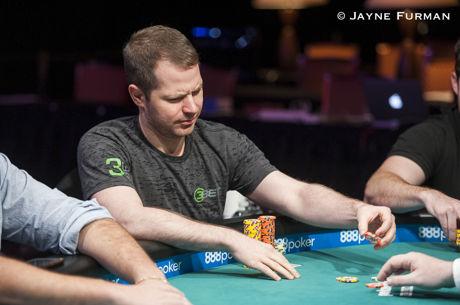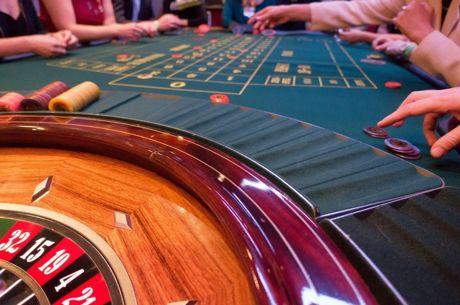Mistakes On All Sides in a Hand of 100NL Zoom

The following hand of 100NL played at the six-handed Zoom tables on PokerStars is an example of one in which both of the players involved questionable bids to win the pot. But since one player had the better hand at showdown, it is unclear either of them came away thinking a misplay was involved.
Action, Action �� Read All About It!
Like many inflated pots in the Zoom games these days, things got a little out of hand preflop. Three players �� the cutoff, the button, and the big blind �� were all involved, all of whom were regulars grinding it out.
The cutoff opened the pot to 2.5 big blinds ($2.50), the table's standard, and was three-bet to $8 by the button. The small blind folded and the big blind elected to cold-call the reraise.
It is hard to imagine many hands the big blind could have that would be strong enough to take this action with someone behind and being out of position against both players still in the hand. Unless the big blind is trapping with some canny read, he should have a strong hand like JxJx or AxQx-suited.
But the action wasn't done and the cutoff repopped it to $24.50. The button called �� notable since the cutoff did not set a good price per se. All three players were over 200 big blinds deep, but the button should have quite a few preflop bluffs like 7x5x-suited or Ax8x-suited that would simply be content to give up at this juncture.
The big blind, of course, couldn't resist, and flicked it in as well. That made the pot nearly 75 big blinds going to a three-way flop in a situation where no one really necessarily had a strong hand. After all, if the cutoff steals a lot here before the flop in the first place, he could have easily gone for it again.
Flops Away
The flop came J?8?2?. Both the sticky big blind and the four-betting cutoff checked. The button took a stab, betting $24 into $72 (the pot after the rake). Still at this point no one necessarily has a strong hand!
The big blind finally sprung into action and raised to $84, the cutoff sheepishly folded, and the button shovelled it in for $176.
Call.
The button had let it all hang loose with A?J?, while the big blind had the more robust J?10? for top pair with a flush draw. The board bricked out and the button scooped a huge pot.
Upon Reflection
Let's examine both players' actions here. First, on the flop, was the big blind raising for value or semi-bluffing?
It is not entirely clear. After all, the big blind can't exactly get a ton of value from 9x9x (and he blocks 10x10x). Nor can he get value from some unlikely Jx9x combo (which he also blocks).
Remember, the button did not necessarily have anything strong when he bet the flop. He took a price preflop with a range that included an assortment of hands, and then after being checked to used position to make a one-third pot stab.
In spots such as this, the big blind has more or less the perfect bluff-catcher. He fears very few cards. At the same time, he can't raise for value, because only hands that have an advantage (e.g., QxQx, AxJx), or hands that have equity against him (K?Q?, A?10?) will continue. But if the big blind calls, all sorts of hands can stay in his opponent's range.
The big blind here faces a situation with two key characteristics. He can't raise for value and he can bluff-catch effectively. Instead, the big blind raised. Because, as we mentioned, the button can have anything, it makes more sense for the big blind to do this with equity hands that are not comfortable calling �� hands like Q?9? or just A?Qx. In other words, hands that are making a play.
The only situation the big blind truly has to fear is an overcard coming on the turn or the river when it is not a heart (and the other card is not a heart). So there are of course bad runouts, but not that many. Not enough to be fearful.
Meanwhile the button seemed to recognize his own range and where his stood atop of it with his ace-jack. He didn't have to have much to make that one-third pot stab when checked to. He would have been hard-pressed to imagine the big blind with 4x4x and to a lesser extent 8x8x. Such things are possible, but he had A?J? with the ace of hearts and went with it.
This seems more defensible given where he stands in his own range and how he might not want a hand like Qx9x or 10x9x to get a free card by calling with only 90 big blinds back. It is not great, but if he knew the big blind well enough, it is hard to see what else he could have done.
Besides folding preflop, of course.









